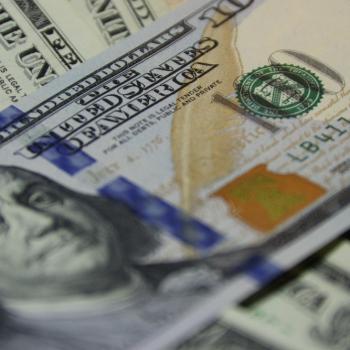Everyone should have an emergency fund, no one disagrees with that. But there is considerable variation in opinions as to how large an emergency fund should be. The specific size should always be based on a combination of individual needs and preferences, but if you’re looking for some guidance, below are some recommendations.
A $1,000 emergency fund
The idea of a $1,000 emergency fund has grown quite popular, not the least of which since it’s been advocated heavily by Dave Ramsey. While I think this is a good start for someone who has no savings at all, it’s also a reality that $1,000 doesn’t cover too much anymore.
It will cover a relatively modest car repair, and modest today means somewhere in the $500 to $1,000 range. But it won’t cover the heavier repairs, such as replacement of a transmission or your cars computer. It won’t even cover the typical monthly housing payment or the deductible on a health insurance plan. Get hit with any of these emergencies and while your $1,000 emergency fund will certainly help, you’ll be scurrying to find the rest of the money you need elsewhere.
I tend to think of a $1,000 emergency fund as a starter fund—you get it built up to this point, but then you keep adding to it quickly. Emergencies, after all, can hit quicker than you can save money for them.
30 days of living expenses
For most people, this should really be the minimum goal. For one thing, an emergency fund equal to 30 days of living expenses will give you breathing room in a job loss until unemployment checks begin arriving. And apart from unemployment benefits, you’ll also have some time to consider and begin initiating a job hunting strategy. Job losses are often followed by a period of emotional adjustment, and it will help to know that you’ll at least have necessities covered while you regroup.
Another reason that 30 days is a better target is because it will probably represent several thousand dollars and that will do a much better job of covering major car repairs, medical deductibles and other large and unexpected bills.
3-6 months of living expenses
This is the range where we’re starting to talk about a truly credible emergency fund. Not only will several months living expenses give you more time in a job loss, but it also has the capacity to cover multiple emergencies. It’s not at all inconceivable, for example, to have a major car repair occurring at about the same time as a job loss. With 3-6 months put away you’d be able to deal with both.
The conventional thinking is that three months expenses works best for those with stable income sources, such as salaries or pensions, while six months is the better target for those with variable incomes. Those who are self-employed, work on commission, or contract workers would fall into this category.
Known contingencies
Still another way to determine the size of your emergency fund could be based on known contingencies. For example, let’s say your health insurance deductible is $2,000, the upper range on the cost of a major car repair is $2,000, and you have a $500 deductible on your car insurance; by adding the three together, you decide that $4,500 will be a sufficient emergency fund.
You can also add 30 days living expenses to it and if you do you’ll be covered come what may. One of the real advantages to constructing your emergency fund this way is that you’ll be in position to deal with multiple emergencies without being tapped out when they’re over. That’s a true emergency fund.
What ever size fund you start out with, keep it growing!
No matter what the initial size of your emergency fund, plan to keep adding to it. There are at least five reasons why your fund should grow over time:
- The cost of living rises over time
- Expenses tend to rise with higher income and that should be reflected in your fund
- There are more emergencies than we generally think, especially if you have children
- As emergencies arise, your emergency fund will need to be replenished
- Generally speaking, it’s better to have an emergency fund that’s a little too big, than one that’s a little too small
What do you think is the right size for an emergency fund?











